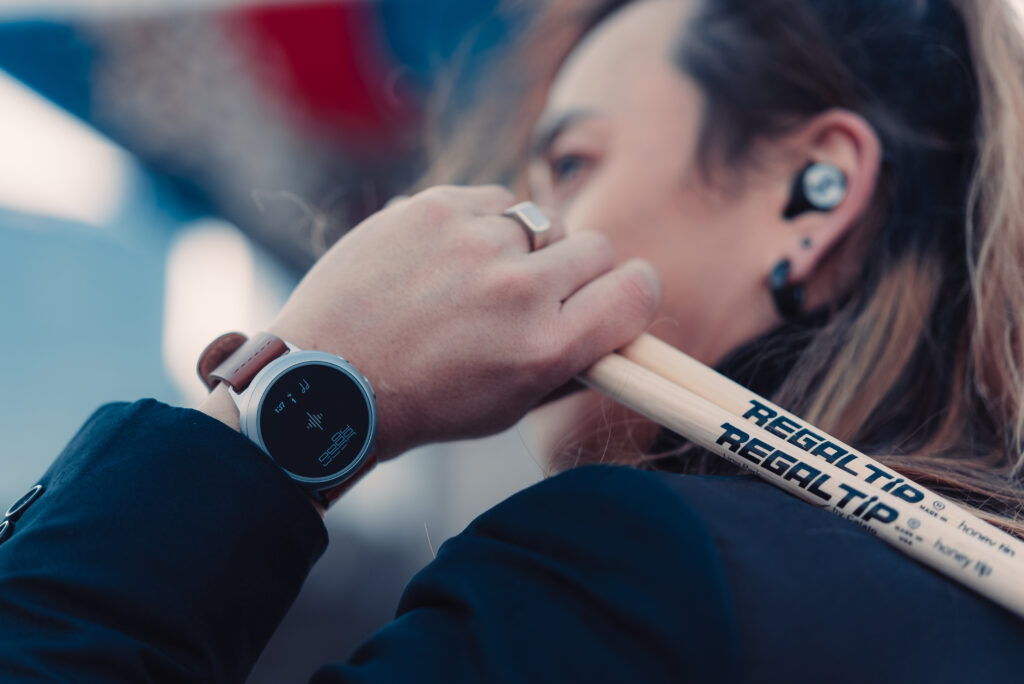
Learning to play new songs can be a great way to become a better musician. But you need the right approach, or you may find yourself stuck on the same level. As many players have found, simply learning more songs is not a guarantee you’ll grow as a musician. In this article, I’ll explain how to grow as a musician with each song you learn.

When you first start playing an instrument, everything is hard. Everything feels a little unnatural and weird. Whether it’s holding a saxophone, sitting behind a piano, or fretting notes on a guitar. The fact that everything is a challenge as a beginner is great for your progress. Because everything is hard, it doesn’t really matter which song you learn or how you go about it. Whatever you do, it will involve things you have no idea how to do yet and through hard work, practice and persistence, you’ll figure it out.
But things are different once you’ve gotten some basic skills down and have reached an intermediate level. More and more, you have the ability to learn songs without too much time and effort. On the one hand that’s great: all the hard work you’ve put in earlier is paying off! There aren’t as many completely ‘new’ things you run into. But on the other hand, this is also the point that many guitarists stop getting better and hit a plateau.

What often happens, is that you can learn 90% of a new song without any major problems, or major effort. The other 10% feels a little uncomfortable or awkward to play for some reason. So, savvy as you are, you figure out how to play that 10% in a way that sounds kind of similar but feels more comfortable. Maybe you use some different chord voicings that you’re more familiar with. Or you pick a strumming pattern that you’ve been playing forever, instead of learning the one in the recording. Or you change some things here and there to hide some of your… let’s call them imperfections.
I admit that I’ve used this strategy plenty of times. Especially when you have a gig coming up very soon and you need to play something that does the job, this isn’t a bad strategy. But if your goal is to improve, ‘kinda learning a song’ is your enemy. You’re re-using the skills you already have instead of refining them or adding new ones to your skill set.
In other words, that awkward 10% is where improvement happens. It’s like what Muhammed Ali said: ‘I only start counting sit-ups when they start to hurt because those are the ones that count’. Similarly, if you can learn a song without too much effort, the gains will be limited. If it requires focus and intense practice (like when you started playing music), you will keep improving and become a better musician. In other words, you should be thrilled about the hard 10%. That’s where real progress is made.

When you adopt this mindset of always going for 100%, every song you learn becomes an opportunity to grow. That’s true for even the simplest of songs. While technology might be the obvious thing to focus on when you want to get to 100%, that’s not the only way you can make the most out of every song you learn. Here are three steps I’d recommend taking every time.
1. Figure out the song by ear. When you learn a song by ear instead of using TAB, sheet music or a video lesson, you train two distinct skills. First, you’ll train your ears to hear in greater detail. You’ll practice picking out the different instruments, hearing the bass notes, dissecting the mix… This gives you a much deeper understanding of the song and everything that’s going on in it. Second, you’ll train your ability to translate sounds that you hear in your head to your instrument: to play by ear. This is a skill that helps you with almost any musical activity: from improvising to songwriting, and from rehearsing to performing on stage.
2. Next, analyse the music theory underlying the song. A great place to start with this is to try and answer questions. Why do these chords sound good together? Why does this melody sound sad? By answering questions like these, you connect the sounds you’ve heard in the song to music theory. Connecting sound with theory is a great way to make sure your understanding of theory is both practical and intuitive. After all, music theory without music is just math!
3. After a little practice, you can play the song, sure. But can you absolutely nail it? Can you play it flawlessly ten times in a row? There’s almost always something you can improve, whether it’s in terms of timing, feel, sound, dynamics… That might sound a little demotivating at first, but it certainly doesn’t have to be. Working to get areas of your playing from good enough to close to perfect is actually super rewarding.
Now, there’s one thing that’s critical if you want to improve your technique: practice slowly! When you are ‘polishing’ parts of your playing, you need to slow down to ‘unlearn’ what you’re used to doing and find a better way. I recommend using a metronome to make sure you’re not speeding up, and really taking the time to perfect your technique. Playing slowly has two advantages. First, it allows you to hear small imperfections that might be barely audible when you play faster. Secondly, you’re going slow enough that you can execute the movements perfectly. As they say, slow is smooth and smooth is fast.
Becoming a better musician by studying the music you love is great. Not only is it more inspiring than doing dry exercises, but it also ensures that you’re spending your practice time on the right things. For example, you could study sweep picking for hours and hours, but if you rarely need it in your playing, it might not be the best way to spend your time. By using the songs you love to play as practice material, you’re always focusing on the things that you need and will actually use in day-to-day playing. Combined with the ‘100% mindset’ learning songs can be a fun, musical and super effective way to improve!
Just Rijna is the founder of StringKick, an online training academy for guitar players. StringKick is focused on helping you to train your ears, learn music theory and develop your musicality, all with the goal of making your musical journey more fun and fulfilling.
Soundbrenner is a company dedicated to helping musicians stay focused on what truly matters: their music. By creating innovative devices, such as Soundbrenner Pulse and Core, our goal is to deliver the best possible practice experience for musicians. Click here to find out more.
Got a question about Soundbrenner wearables? Reach out to us at [email protected], we’re happy to help!